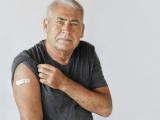Sep 13, 2012 (CIDRAP News) – Health departments in some states have alerted their providers about a thin supply of rabies vaccine that has limited pre-exposure prophylaxis and altered how they obtain vaccine for post-exposure prophylaxis (PEP).
On Sep 7 the US Centers for Disease Control and Prevention (CDC) announced that rabies vaccine for pre-exposure use is in limited supply from Novartis and Sanofi Pasteur, but RabAvert, made by Novartis, is available from wholesale distributors who have existing stocks.
So far there are no limits on rabies vaccine or immune globulin for PEP, the CDC said, adding that Sanofi is still able to send rabies vaccine for PEP to health providers who are treating patients with documented rabies exposure. It added that additional lots of the vaccine are expected to be released in the coming months to ease the tight supplies.
(PEP involves four doses of vaccine administered over 2 weeks and an injection of human rabies immune globulin administered with the first vaccination, according to the US Advisory Committee on Immunization Practices [ACIP].)
In a Sep 11 update, the CDC said discussions are under way among federal, state, and local officials to evaluate the current supply of rabies vaccine and consider additional strategies to help providers more easily obtain the vaccine.
It listed four wholesale distributors that have supplies available for pre- and post-exposure use, and it said additional lots of RabAvert are expected to be released over the next couple weeks to meet current demand.
The CDC advised providers to ask their state and local health department for assistance evaluating animal-bite situations and the need for rabies PEP in their patients and urged people with increased risk of rabies exposure to take appropriate precautions.
Yesterday the Minnesota Department of Health (MDH) sent a health alert to providers urging them to allow extra time to obtain pre- and post-exposure rabies vaccine from manufacturers or distributors.
Joni Scheftel, DVM, MPH, Minnesota's state public health veterinarian, told CIDRAP News that Minnesota hasn't had any instances in which PEP wasn't immediately available. She said the state has received a few calls about the vaccine and that the health alert was mainly a proactive step to keep providers posted on the status of the rabies vaccine supply and procedures for getting doses of rabies biologics.
She added that there is still enough supply but that health officials and providers are having to shuffle doses to meet the demand.
Meanwhile, the Iowa Department of Public Health (IDPH) recently sent a similar alert to its providers and public health departments. Ann Garvey, DVM, MPH, Iowa's state public veterinarian, told CIDRAP News that the tight supplies come at a busy time in the state for bat exposures, but so far providers who need vaccine for PEP have been able to obtain supplies.
She said the IDPH has fielded some calls from providers about how to work through the process for getting rabies vaccine.
Elsewhere, the Illinois Department of Public Health (IDPH) also sent an alert to its providers, according to IDPH spokeswoman Melaney Arnold. The alert noted that the situation wasn't considered a shortage but rather a temporary situation as characterized by the CDC.
The IDPH alert acknowledged that several providers had difficulty acquiring rabies vaccine for PEP and pointed them toward the CDC's product availability update, which the IDPH said is an evolving situation. It also urged health providers to follow PEP guidance and to share rabies prevention messages with patients.
So far the reason for the shortage isn't clear, but health officials contacted by CIDRAP News said production delays and communication glitches about the quantity of rabies vaccine at wholesale distributors appear to be contributing factors.
See also:
Sep 11 CDC rabies vaccine update
Sep 7 CIDRAP News Scan "CDC reports limited supply of rabies vaccine"
Mar 19, 2010, ACIP recommendations on rabies vaccine




















